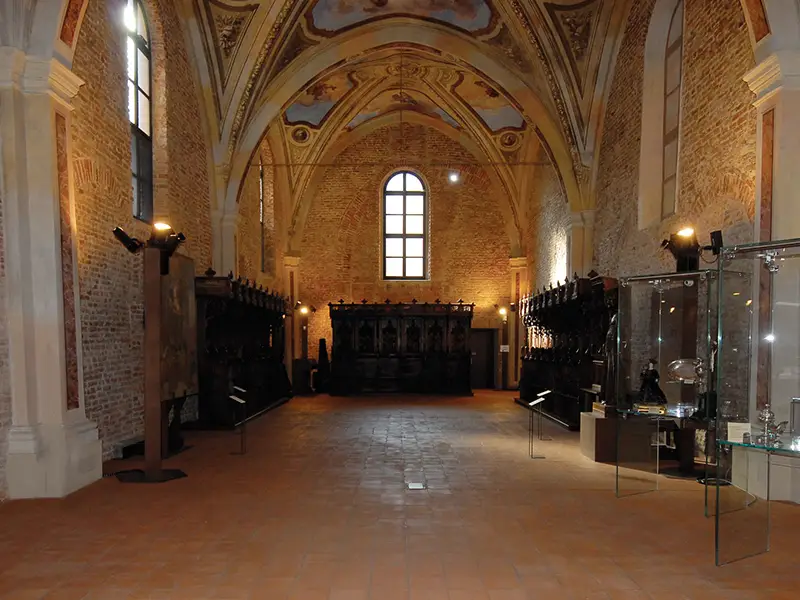Considered by many scholars as the first cathedral of Asti
It houses important archaeological finds from the Roman era
The wooden choir of Baldino da Surso is preserved in the museum area
Saint John Space
The former Chiesa di San Giovanni (Church of Saint John) is considered by many scholars to be the first cathedral in Asti. It is believed that it was built around the sixth century, after the affirmation of Christianity in the city of Asti. Inside the building, the crypt of the 9th-10th century, characterized by reused columns and both Roman and early medieval capitals are of particular interest.
The originally early Christian structure, over time has developed on itself, substantially modifying the original structure. The last major change was made in the fifteenth century, when the entrance to the building was located to the east.
Recent archaeological excavations have brought to light a mosaic floor dating back to between the 1st and 2nd centuries AD, probably reused in the early Christian era for the domus ecclesiae, i.e. the first meeting room of the Asti Christian community. The restoration works of the area, which began in 2001 and ended in 2010, made it possible to redevelop the area of the episcopal complex of the Cathedral and to create Spazio San Giovanni (Saint John Space).
Museo Diocesano (Diocesan Museum)
The church is the seat of the first nucleus of the Diocesan Museum.
This space has a dual function: To make the monumental complex and the crypt of the former Chiesa di San Giovanni (Church of Saint John) usable, and to preserve the treasures of the Cathedral.
Among the works exhibited in the Museum, the most significant is the wooden choir in Gothic style by Baldino da Surso, dating back to 1477. The wooden statue of Santa Coronata (Crowned Saint) from the 14th century is also worthy of note.
The Crypt
The crypt can be visited and is the most underground area of the church of San Giovanni. It is characterized by the presence of four Roman columns reused, three of which in red Egyptian porphyry, which articulate the interior space and have capitals of both Roman and early medieval times.
Inside the crypt is kept the sandstone statue of Saint John the Baptist, dating back to the fourteenth century.









